Article updated on January 15, 2024
Text & Photographs: Claire Lessiau & Marcella van Alphen
My eyes catch something massive crossing the river in a slow but steady pace. It is an Asian elephant carrying its mahout or handler, seated in a lotus position on its neck. Fresh water from the river splashes my face and startles me. “Paddle forward! Paddle forward! Get down! Get down!”, yells our rafting guide, and his instructions are putting my focus back on the class III rapid we are descending on this white water section of the Taeng River (or Mae Taeng in Thai), one hour and a half from Chiang Mai, the capital of Northern Thailand.

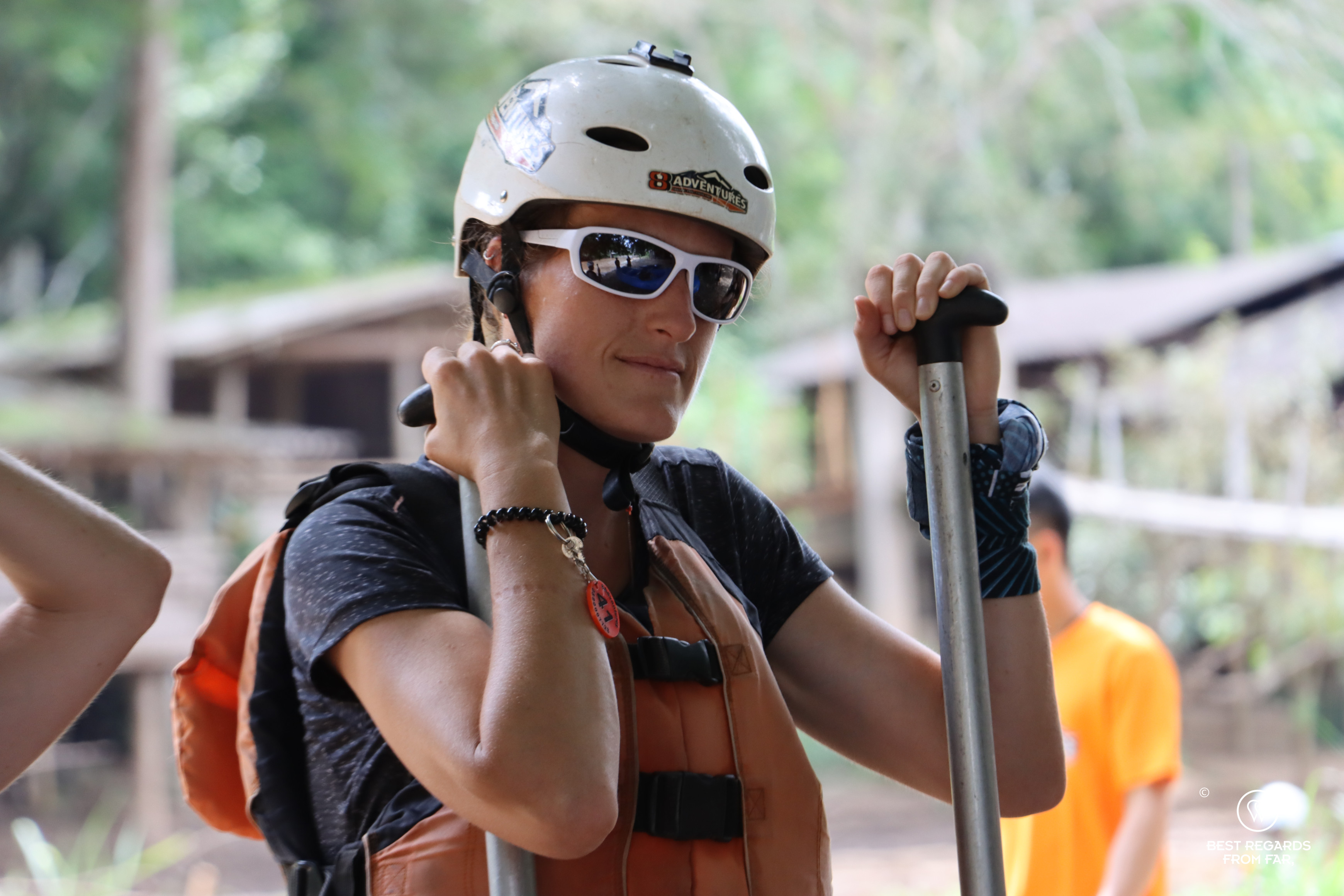
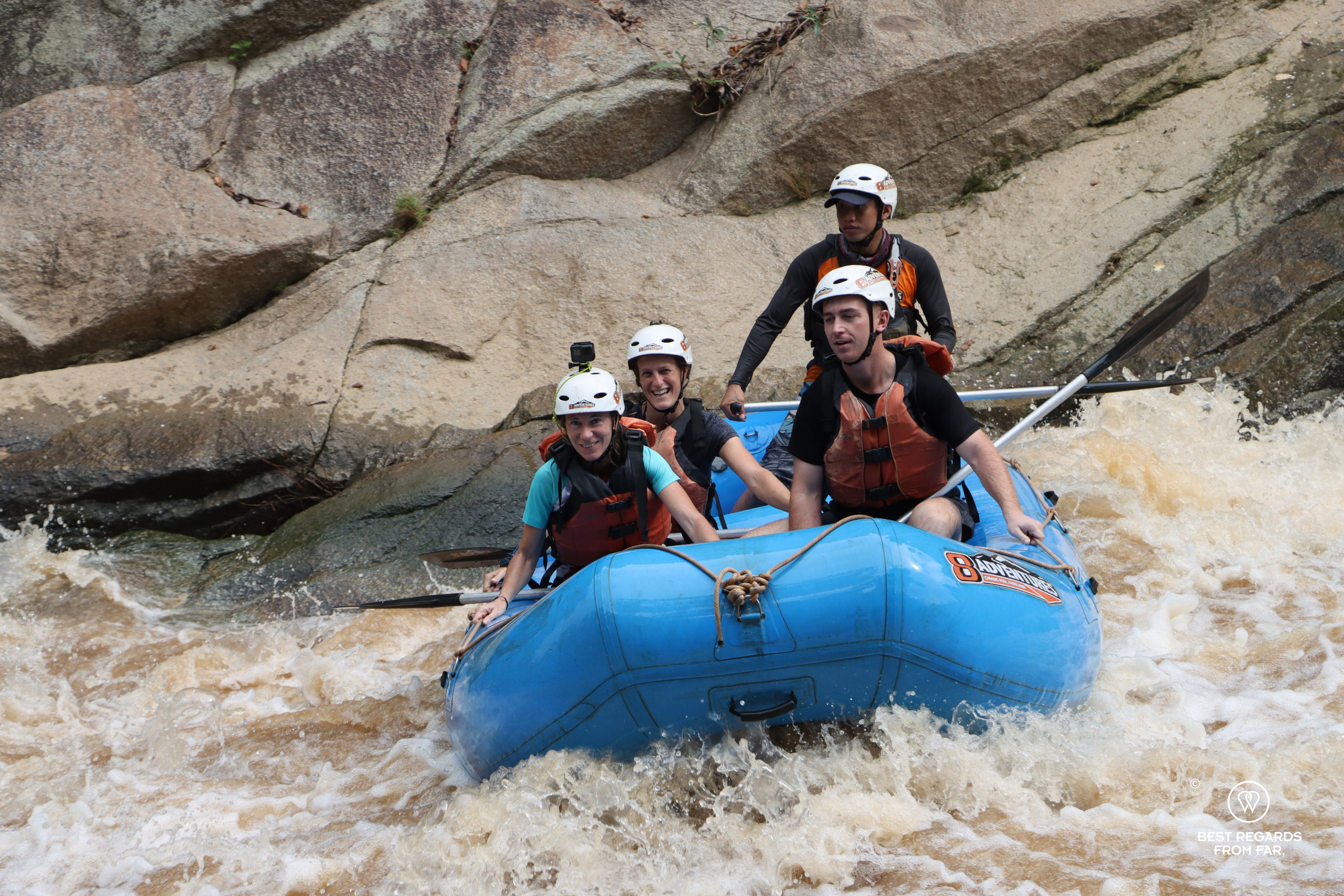
The river gently winds itself through the low mountains which are partially cultivated. Birds hunt for fish. On calm sections, we drift by bamboo floats that are used by locals to cross and reach their bamboo houses on stilts on the opposite bank. Coffee plants grow in the shade. Elephants – from some of the many elephant camps along the Taeng River – feed along the river banks.
I try to stay focused on the paddling. I hold on tightly as the raft hits one of the rocks rising up from the river in the middle of a significant water drop. “Go left!”, our instructor commands, his intonation revealing a mix between pleasure and seriousness. We put all our weight on the left size of the raft and avoid capsizing.

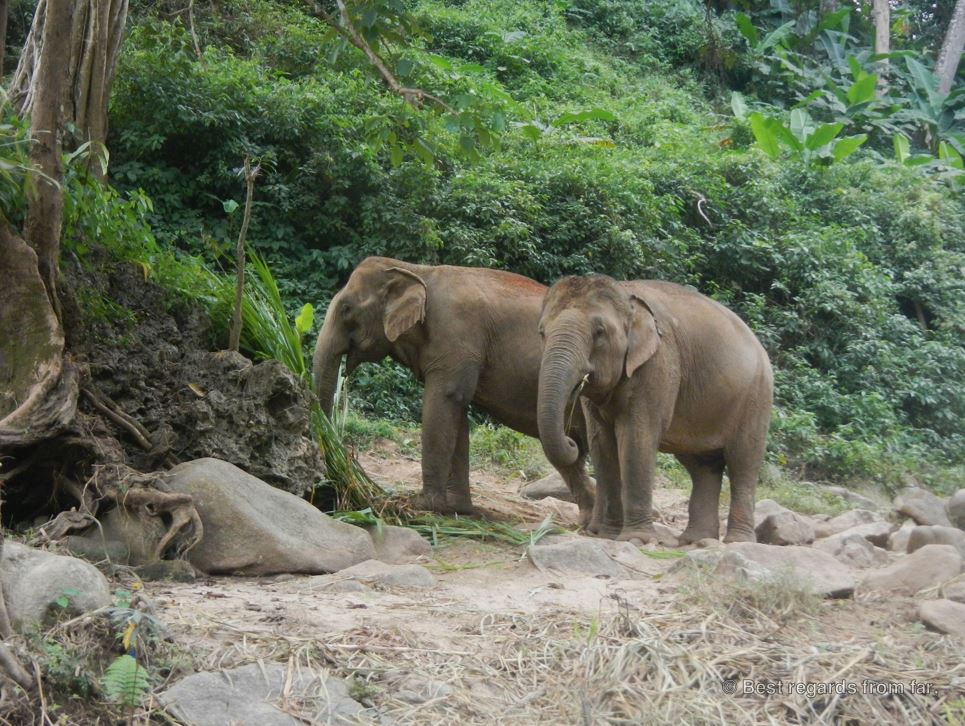

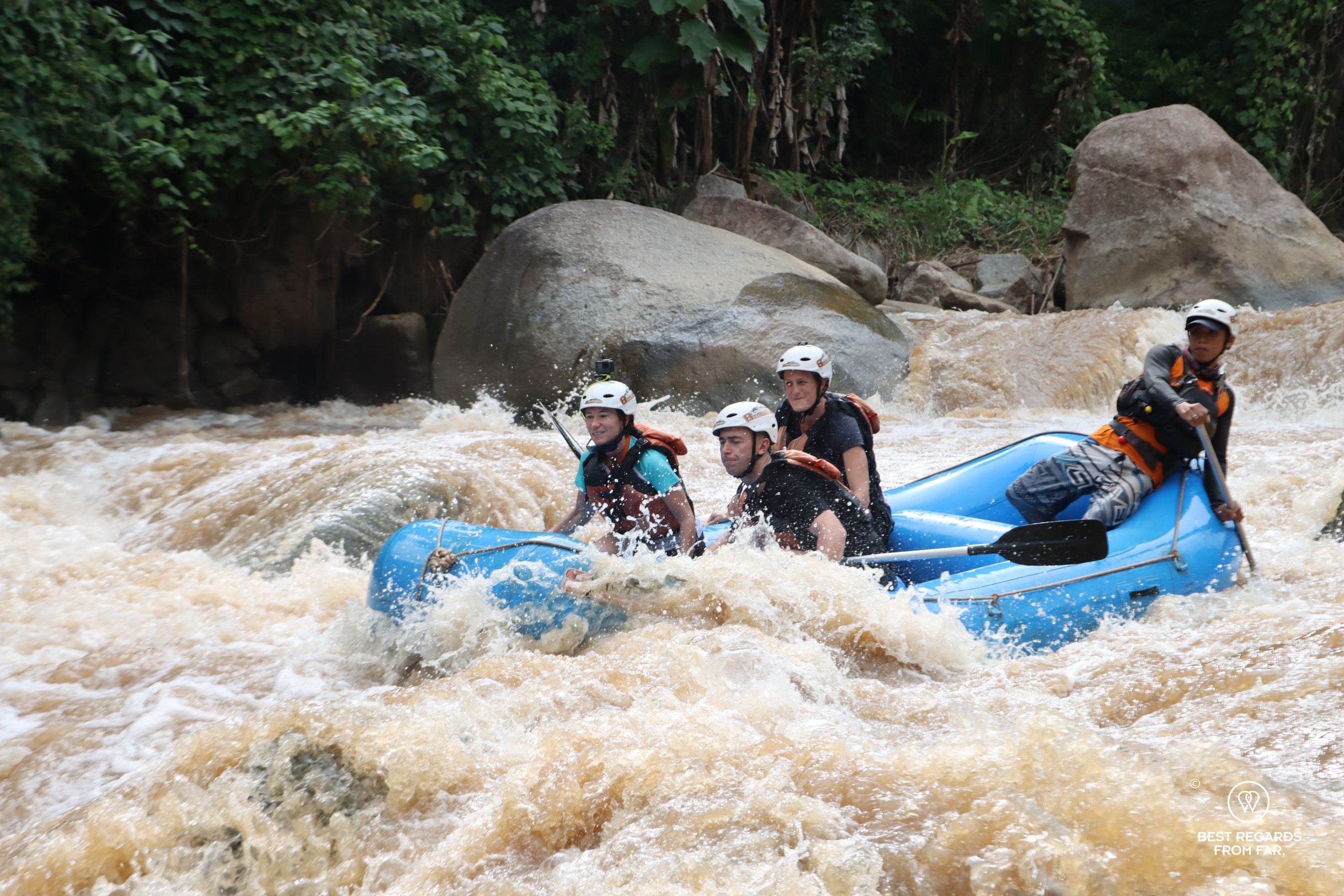
Occasionally, another mahout seating on the neck of his calm pachyderm crosses the river, heading to the jungle for a couple of days to find food. A bit further down, in a bend of the Mae Taeng, we gently float by a group of five people who are washing an old retired elephant gently bathing. For the past few years, most of the focus has shifted from riding elephants to elephant sanctuaries with no riding allowed. If vets and specialists do not all necessarily agree, this has proven an excellent business plan for many of the elephant camps around touristy Chiang Mai. Ultimately, the food source of these giant browsers is shrinking because of human habitat expanding, and today, they need to earn their keep.
As I am reflecting on the situation, I am quickly called back to my paddling duties as the raft is moving fast through the class III rapids that turn class IV in the rainy season. Nice drops follow one another for a true adrenalin rush. A few young monks in their bright orange dresses are seating on a rock, laughing and taking pictures of the strange bright blue rubber embarkation maneuvered by a small bunch all-geared up in similarly bright orange life jackets!
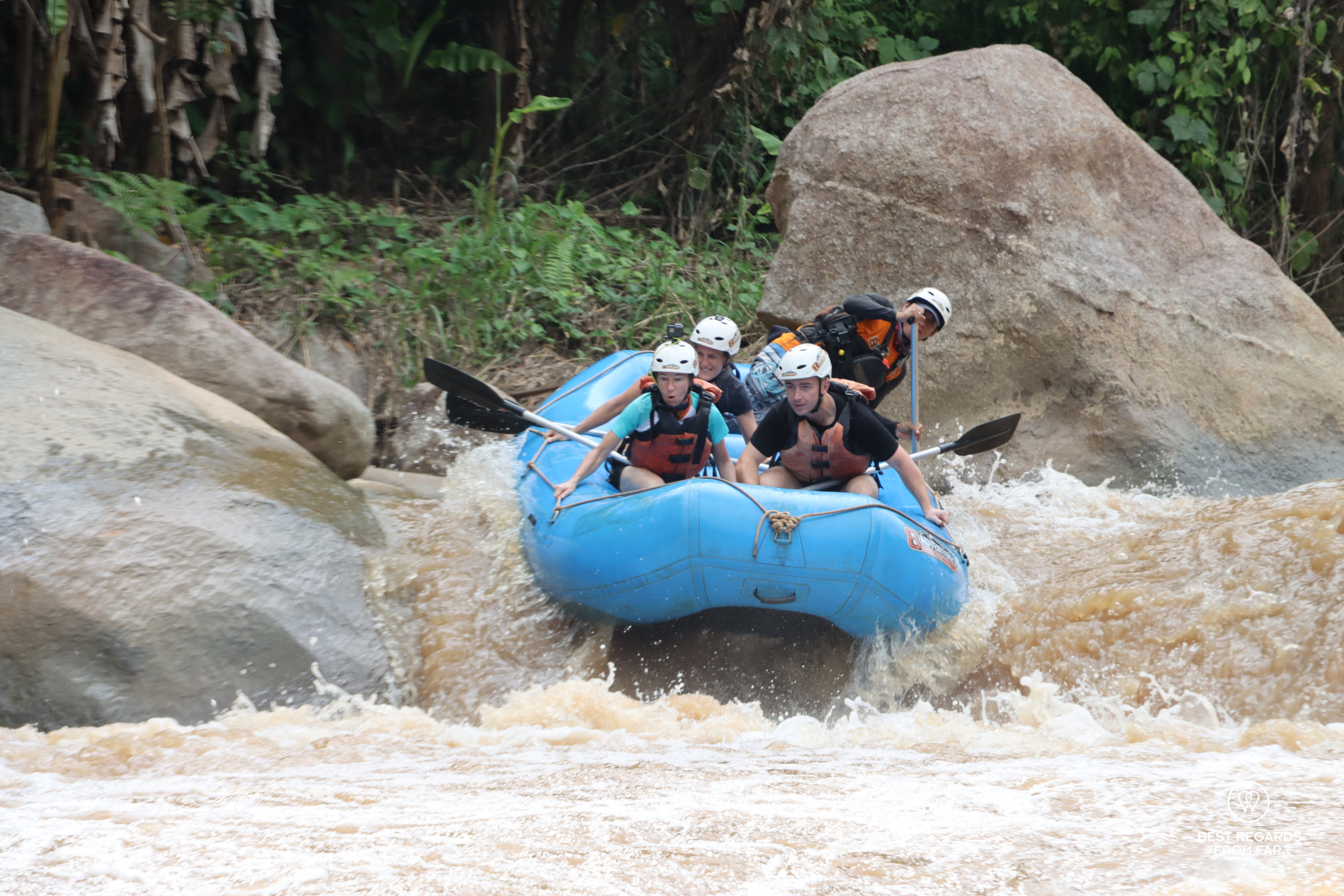
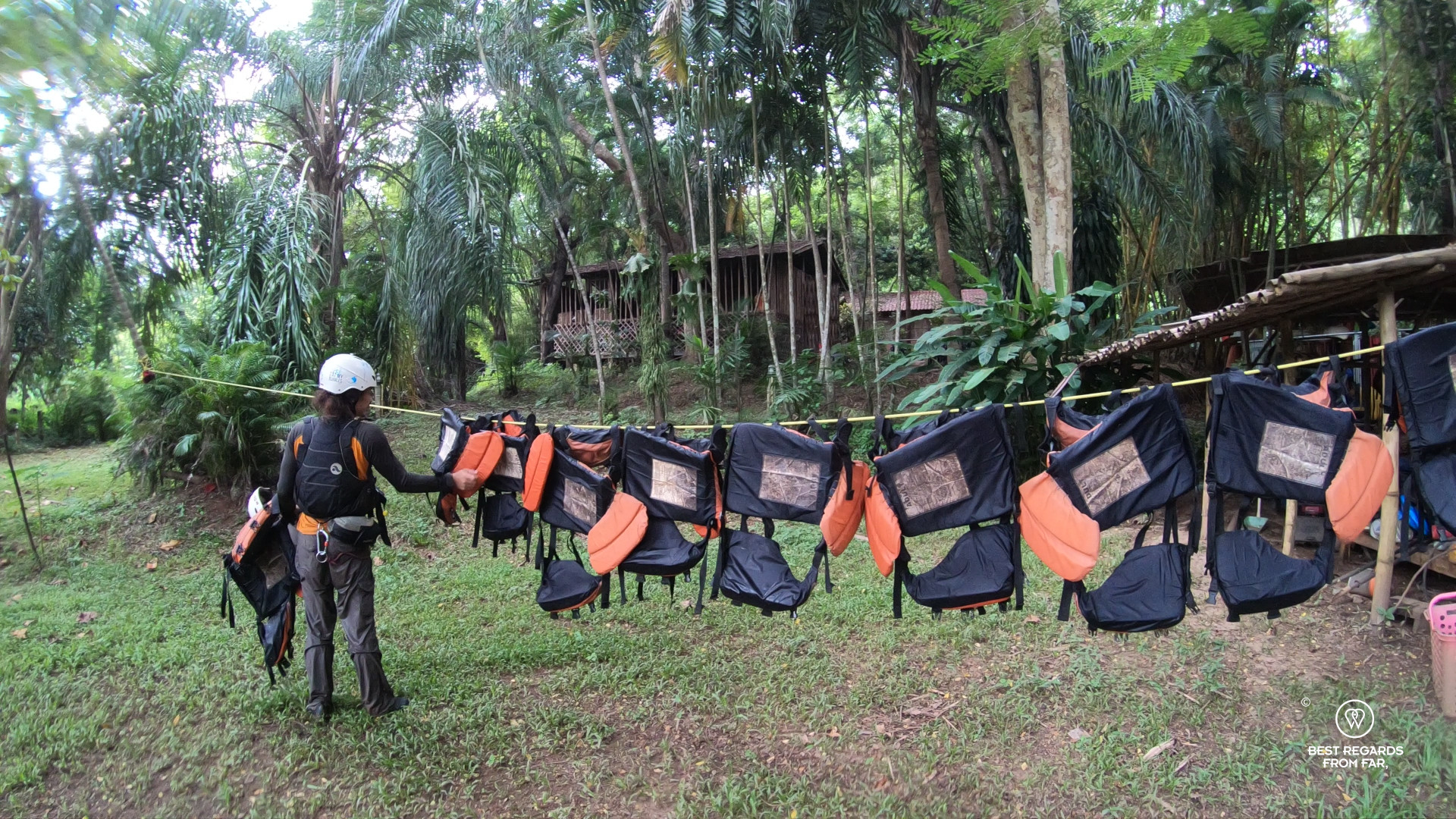
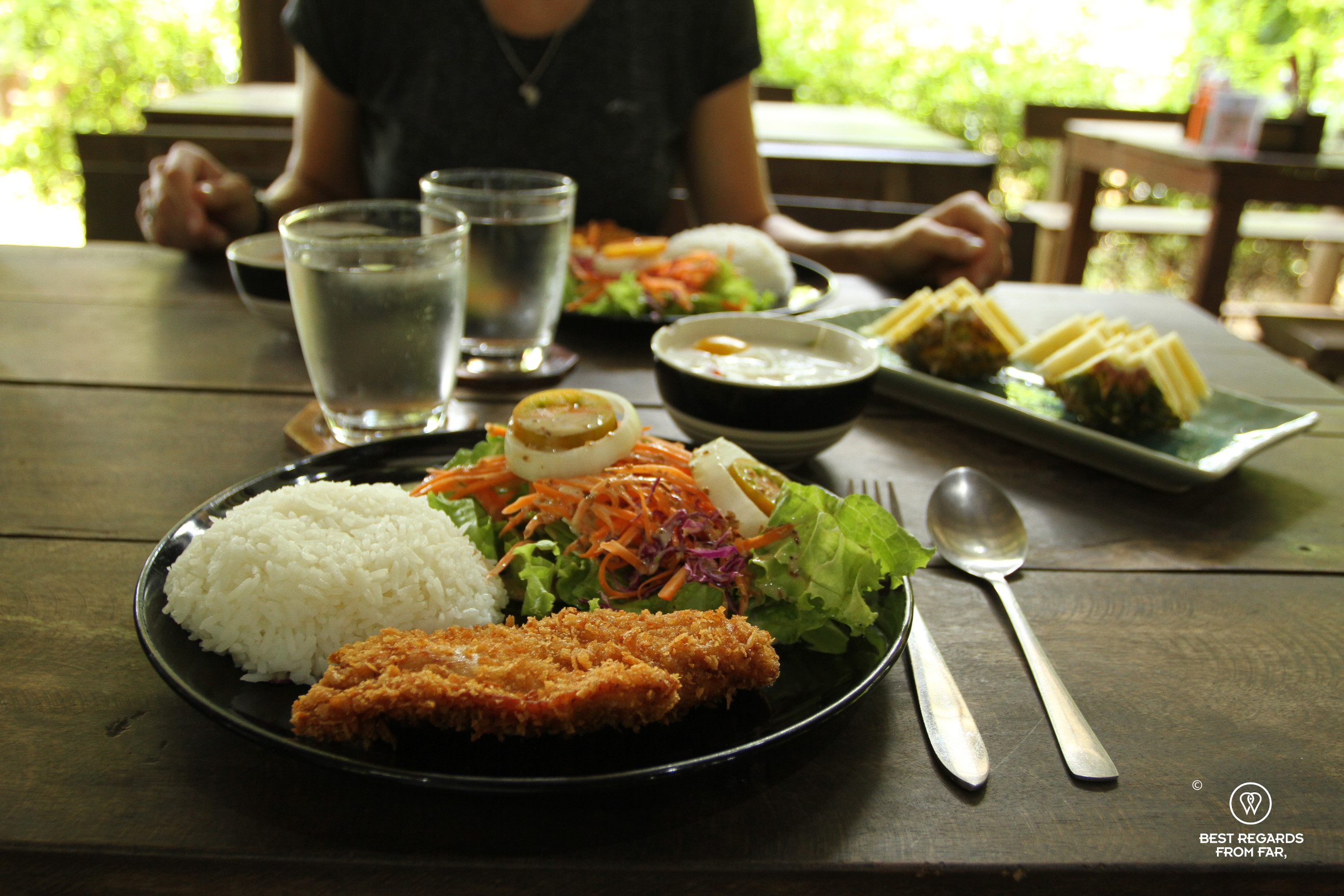
White water rafting the Taeng River – which may be a bit of a misleading statement after the rainy season when the river turns brown – allows to see slices of life in the mountains and to take in a not-so-touched nature in the North of Thailand. Other adventures, such as hiking to waterfalls offer plenty of opportunities to see a bit more wildlife and local life while having fun in the lush forest surrounding Chiang Mai.


Travel tips:
- If you feel like living this adventure yourself, check out 8adventures, the pioneers of white water rafting on the Taeng River, often copied, but never equaled!
- Other adventures such as trekking and zip-lining are also proposed.
- Check out this interactive map below for the specific details to help you plan your trip and more articles and photos (zoom out) about the area!
Like it? Pin it!
For more in Thailand, just click on the images below:



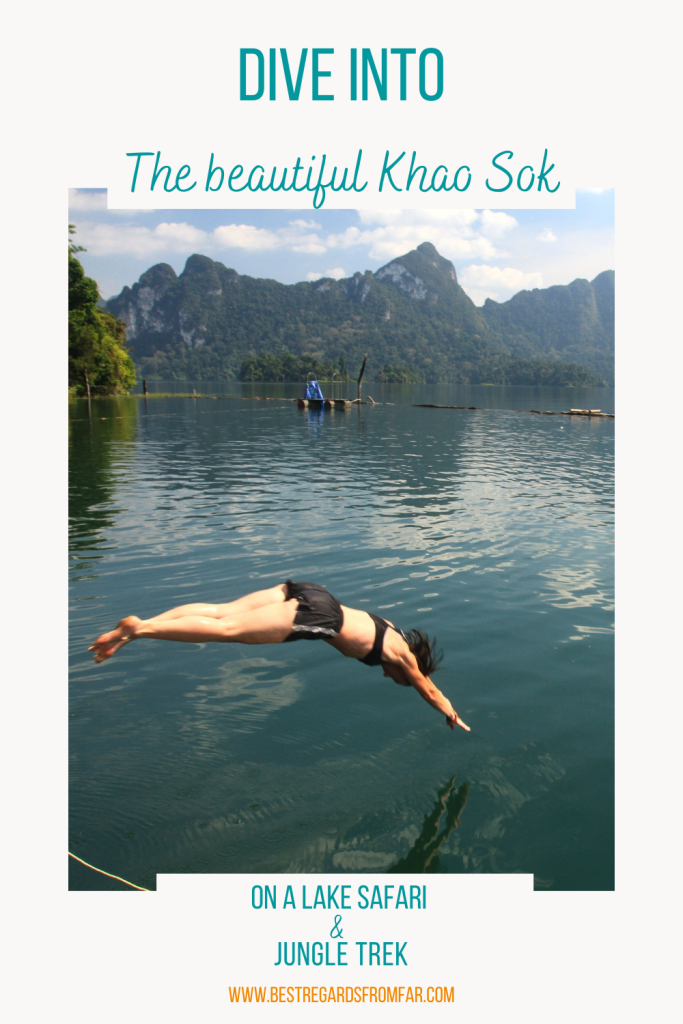




Cool!
Yes, it really is! Thanks!
Thanks for the excellent advice, it actually is useful.
Thanks Dan, happy to have been able to inspire you!